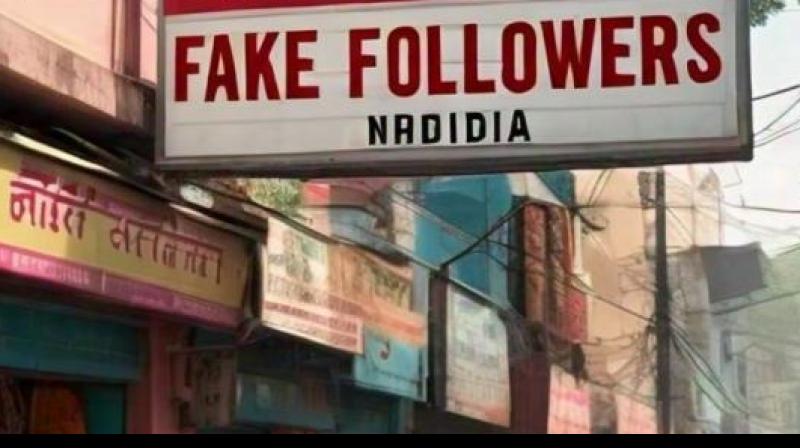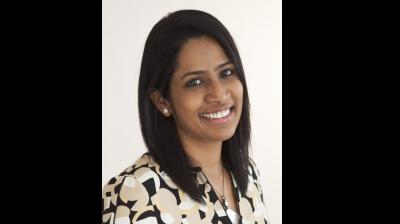With India’s ever-evolving creator economy, influencer marketing appears to be more important than ever for brands to connect with their customers. But, it seems that the industry is trying to cut a Gordian Knot.
And what that might be - fake follower farming.
The substance of the industry is lurking in the murky waters with the prevalence of fake followers.
As per an analysis by KlugKlug, nearly two out of three Instagram profiles in India have fake followers. The study also revealed that only 2.48 million profiles out of the eight million audited in India had credible and high-quality followers.
Highlighting the importance of influencers, today, Sujala Martis, director consumer marketing,
Marketers consider influencer marketing a crucial part of their overall communication strategy. As per a joint report by EY and BigBang.Social, 75% of brands consider influencer marketing as part of their marketing strategy. But, with the dark shadow of fake followers that looms over the influencer space, brands lose around 30-50% of their money on every campaign, as reported in KlugKlug’s analysis.
Will brands now move away from influencers? Are there other metrics that brands should look at while collaborating with a creator?
Tara Kapur, market lead- India, Duolingo English Test, stated, “The report itself hasn’t changed the way I look at evaluating influencers, but it has once again proven that just looking at following numbers for influencers is not enough to gauge their relevance with target audiences.”
On the topic, Martis added, “Initially, brands focused on vanity metrics alone like follower count, post likes, and engagement rates to gauge an influencer’s effectiveness. At the same time, the rush to get onto the influencer bandwagon and the demand for them led to an explosion in the field, leading to a surge in the deployment of questionable practices such as the use of bots, buying followers and likes.”
Today, marketers are using both large and nano influencers equally. In terms of engagement rates, micro-influencers are driving more engagement as compared to the mega influencers.
Stressing further on the eminence of micro-influencers and nano-influencers, Mandeep Malhotra, founder, Srishti Media & Investments, said, “Using nano-influencers could indeed be a promising strategy for brands, especially in light of the challenges posed by fake followers and declining trust in larger influencers. Nano-influencers typically have smaller but highly engaged followings, often consisting of friends, family, and community members.”
Even though the most sought-after, engagement rate is not the only criterion for brands to evaluate influencers.
Reach but with a view that goes beyond numbers, relevance, resonance and return are a few key parameters for evaluation, as stated by Martis. “We are also evaluating influencer marketing from a long-term lens. By engaging repeatedly with an influencer, we enhance the authenticity and value of our brand-creator relationships, allowing us to experiment with various content types and optimise performance based on detailed analytics. We now utilise technology and tools to audit and verify influencer engagement and audience legitimacy. This approach ensures we gain more accurate insights for making more informed and confident investment decisions,” she further explained.
Currently, valued at over INR 1,800 crores, influencer marketing has hit a stumbling block. With the cost of buying fake followers being as low as INR 8-10 for 1,000 followers, India has come out to be the biggest buyer and supplier of these fraudulent followers.
“Despite the challenges highlighted in the report regarding fake followers and inactive accounts, influencer marketing still holds significant potential for brands when executed thoughtfully. Authenticity matters and brands should prioritise working with influencers whose values align with theirs and who have genuine connections with their audience. Instead of focusing solely on macro-influencers with large follower counts, they can benefit from collaborating with micro-influencers who often have higher engagement rates and more authentic relationships with their followers. Brands should also conduct a thorough vetting of influencers before partnering with them by checking for fake followers, assessing engagement rates and ensuring alignment of brand values,” opined Malhotra.
Due to the growing number of fraudulent followers, as much as 36% of the influencer market budget is wasted, as stated in the KlugKlug report.
The prevalence of this scam is widely seen in the case of beauty and lifestyle influencers which is quite alarming because as stated in the EY report, it is the lifestyle, fashion and beauty sector which will drive the growth of influencer marketing. But, it isn’t just the brands losing out, it is the influencers as well who are caught in the spiral.
Ranveer Allahbadia, a YouTuber and content creator, said, “It’s been almost nine years since I made my first video. ‘Fake followers’ can never guarantee you consistent engagement or reach. We have never used 'fake followers' to grow. A piece of advice to aspiring creators - work on your content and followers will follow. Consistent hard work over many years helped us reach a massive number of subscribers across all our YouTube channels and on our social media. BeerBiceps is an example of how distribution can be built organically.”
Can the creator economy recover from this scam? How can brands stay wary of this phenomenon?
With agencies currently playing a crucial role in implementing influencer marketing strategies, it is with them that the baton of change lies.
Tusharr Kumar, COO, OML, explained, “Whenever we approach a creator or artist to come onboard – outside of our belief in them as a creator – we always ensure that we’re checking for authenticity. We check content and audience historical analytics using our influencer tech tool and its unique social media prediction engine. One of the features known as the Genuine Audience Percentage (GAP) score identifies the authenticity of an influencer’s audience and their engagement.”
Emphasising on how they help influencers get out of the rut of fake followers, Kumar, added, “If we feel that a creator has a very large skew of bought followers, we don’t work with them on both sides of the business. If this is a small number of followers and we have deep belief in the creator and their content, we work closely with them to fix this. First, a deep dive into that influencer’s follower analytics to pinpoint and weed out fraudulent accounts. Then we get to organic rebuilding by focusing on real engagement and genuine connections. For any creator or brand, the key always is to build a community - can be big or small. More important than the scale, the deep connections you can forge for your fans and audiences are key.”
As it becomes more challenging for brands to identify genuine and authentic creators, agencies are now becoming vigilant and restoring to tech-enabled tools to root out the practice.
Rubeena Singh, country manager, India and MENA, AnyMind Group, remarked, “Our influencer marketing platform, AnyTag, provides in-depth analysis of creators' fake follower estimates along with an audience credibility score. We always ensure that we run that check before we recommend influencers to our client brands. Once they have already gone live with the brand's content, there isn't much one can do except ensure such checks are done before onboarding influencers. Many brands successfully leverage influencer content to grow their reach organically. They mostly do this via partnering with creators and publishing collab-reels on Instagram, so that the content is visible on the brand as well as the influencer's feed. This helps the brand leverage the organic reach of the influencer via relatable content.”
Not all is gloom and doom, yet. Brands, agencies and influencers have fathomed that for staying in this space in the longer run authenticity is the key.
Kumar articulated, “After more than two decades of working with the whole gamut of creators to brands and everything in between, we’ve understood that organic growth is where the proof lies. Growing a community organically may take a lot of effort, time and manpower but it’s entirely worth it in the long-term. What’s also becoming evident is that your follower count is not directly proportional to your content performance – some mid-tier creators and brand pages have massive engagement on content while their followers don’t grow at the same pace and this is fine – as long as you’re meeting your content goals. Another thing that we recommend to brands and creators alike is to build a multi-platform plan. Your WhatsApp channel content plan should feed into your Instagram release plan, while you’re also thinking about connecting these to in-person experiences. That’s where growth will start feeding into each other and you’ll add audiences for varied spaces.”
However, the problem is not just restricted to creators buying followers in a bid to expand their reach, it gets more complex. We are also seeing big media houses publishing articles promoting websites to buy fake followers.
“Taking a stand against the promotion of websites selling fake followers is crucial to maintaining the integrity of social media platforms and influencer marketing as a whole. Platforms like Instagram, X, and Meta should implement stricter policies and enforcement measures to crack down on the sale of fake followers. This includes identifying and removing accounts engaged in such practices, as well as penalising users who purchase fake followers. There are regulatory bodies like AAAI, Ad Club and IBF who can pave the way for a more regulated future. Government agencies like TRAI responsible for regulating advertising and online commerce could investigate and take legal action against websites promoting the sale of fake followers. Regulations could be put in place to deter these practices and impose penalties on offenders,” observed Malhotra.
Curating a collaborative approach involving various stakeholders, we can work towards creating a more transparent and trustworthy online ecosystem that benefits users, brands, and influencers alike, divulged Malhotra.
“Brands should take a proactive stance against the use of fake followers and prioritise working with influencers who have genuine, engaged audiences. Social media platforms, industry associations, and educational institutions could collaborate on initiatives to educate users, influencers, and brands about the importance of authenticity and ethical practices in online marketing,” he surmised.












